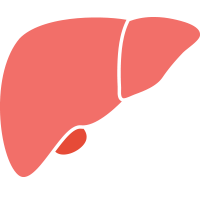
Hepatic Cell News
Hepatic Cell News is an online resource covering the top research on hepatocytes and liver diseases.
Theaflavin-3,3′-Digallate Protects Liver and Kidney Functions in Diabetic Rats by Up-Regulating Circ-ITCH and Nrf2 Signaling Pathway
[Journal Of Agricultural And Food Chemistry] Research indicated that TFDG administration effectively lowered the fasting blood glucose and serum lipid concentrations and enhanced the functionality and cellular architecture of the liver and kidney in rats with diabetes.
Native and Engineered Extracellular Vesicles: Novel Tools for Treating Liver Disease
[Journal Of Materials Chemistry B] The authors introduce the mechanisms and effects of native extracellular vesicles derived from different cells and tissues to treat liver diseases of different etiologies.
Integration of Single-Cell RNA-Seq and Bulk RNA-Seq to Construct Liver Hepatocellular Carcinoma Stem Cell Signatures to Explore Their Impact on Patient Prognosis and Treatment
[PLOS One] The authors explored the association of stemness indicators with survival outcomes and clinical characteristics by combining clinical information and survival analyses.
Liver Cancer Development Driven by the AP-1/C-Jun~Fra-2 Dimer Through C-Myc
[Proceedings Of The National Academy Of Sciences Of The United States Of America] Researchers showed that hepatocyte-restricted expression of a single chain c-Jun~Fra-2 protein, which functionally mimiced the c-Jun/Fra-2 AP-1 dimer, resulted in spontaneous HCC formation in c-Jun~Fra-2hep mice.
NIH Pay Raise for Postdocs and PhD Students Could Have US Ripple Effect
[Nature News] The US National Institutes of Health (NIH) said it will raise the salaries of thousands of postdoctoral researchers and graduate students who receive a prestigious NIH research fellowship. The move could boost pay for other scientists as well, because academic institutions often follow guidelines set by the NIH.
In a Scientific First, Researchers Use CRISPR Base Editing to Treat Liver Disease in Fetal Monkeys
[STAT News] Scientists reported on Monday, April 22 that they used a form of the technology known as “base editing” to alter the DNA of laboratory monkeys in the womb, substantially reducing the levels of a toxic protein that causes a fatal liver disease before the animals had even been born.
Precise Capture and Dynamic Release of Circulating Liver Cancer Cells with Dual-Histidine-Based Cell Imprinted Hydrogels
[Advanced Materials] Scientists design an ultra-strong ligand, L-histidine–L-histidine, specifically targeting sialylated glycans on the surface of circulating tumor cells.
DCDC2 Inhibits Hepatic Stellate Cell Activation and Ameliorates CCl4-Induced Liver Fibrosis by Suppressing Wnt/β-Catenin Signaling
[Scientific Reports] Investigators elucidated the role of doublecortin domain containing 2 (DCDC2) in liver fibrosis. Their findings revealed a reduction in DCDC2 expression in both human fibrotic liver tissues and carbon tetrachloride (CCl4)-induced mouse liver fibrotic tissues.
LAGE3 Promotes Angiogenesis on Hepatocellular Carcinoma by Stabilizing VEGFA mRNA
[Biochimica Et Biophysica Acta-Molecular Basis Of Disease] Increased expression of LAGE3 cloud led to upregulated VEGFA secretion and angiogenesis in hepatocellular carcinoma. The mechanistic study revealed LAGE3 was required for the VEGFA mRNA stability.
A Novel Engineered IL-21 Receptor Arms T-Cell Receptor-Engineered T Cells (TCR-T Cells) Against Hepatocellular Carcinoma
[Signal Transduction And Targeted Therapy] Researchers determined the combination effects of IL-21 in T cell therapy against HCC and investigate optimized strategies to utilize the effect of IL-21 signal in T cell therapy.
Long-Term Risks of Cirrhosis and Hepatocellular Carcinoma across Steatotic Liver Disease Subtypes
[American Journal Of Gastroenterology] The authors enrolled 332,175 adults who participated in a health screening program between 1997 and 2013. Participants were categorized into various subtypes, including metabolic dysfunction-associated SLD (MASLD), MASLD with excessive alcohol consumption , and alcohol-related liver disease, based on ultrasonography findings, alcohol consumption patterns, and cardiometabolic risk factors.
Hepatic Signal Transducer and Activator of Transcription-3 signaling Drives Early-Stage Pancreatic Cancer Cachexia via Suppressed Ketogenesis
[Journal Of Cachexia Sarcopenia And Muscle] Researchers establishes a direct link between skeletal muscle homeostasis and hepatic metabolism. Dietary and anti-inflammatory interventions that restored ketogenesis may be a viable preventative approach for pre-cachectic patients with pancreatic cancer.
The publications featured in Hepatic Cell News are expertly selected by our in-house editorial team from high impact, peer-reviewed academic journals. We cover areas including the culturing and characterization of hepatocytes, liver stem cells, and the pathogenesis of conditions such as liver cirrhosis and hepatocellular carcinoma. Additionally, we provide the latest updates on broader news, upcoming events, and job postings to keep the global liver research community connected!

 Cancer Stem Cell News
Cancer Stem Cell News Cell Therapy News
Cell Therapy News Dermal Cell News
Dermal Cell News Endothelial Cell News
Endothelial Cell News ESC & iPSC News
ESC & iPSC News Extracellular Matrix News
Extracellular Matrix News Hematopoiesis News
Hematopoiesis News Hepatic Cell News
Hepatic Cell News Human Immunology News
Human Immunology News Immune Regulation News
Immune Regulation News
 Intestinal Cell News
Intestinal Cell News Mammary Cell News
Mammary Cell News Mesenchymal Cell News
Mesenchymal Cell News Muscle Cell News
Muscle Cell News Neural Cell News
Neural Cell News Organoid News
Organoid News Pancreatic Cell News
Pancreatic Cell News Prostate Cell News
Prostate Cell News Pulmonary Cell News
Pulmonary Cell News
